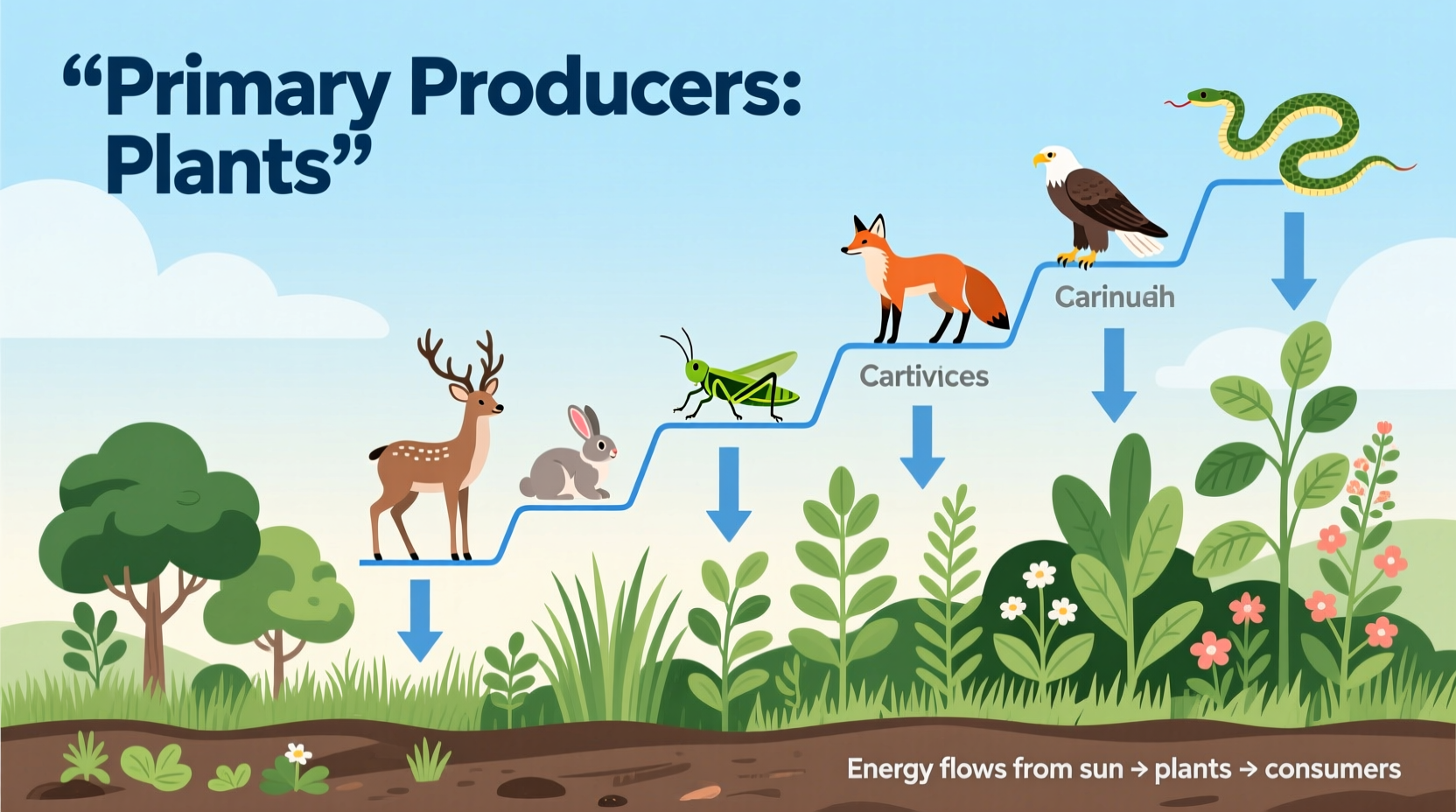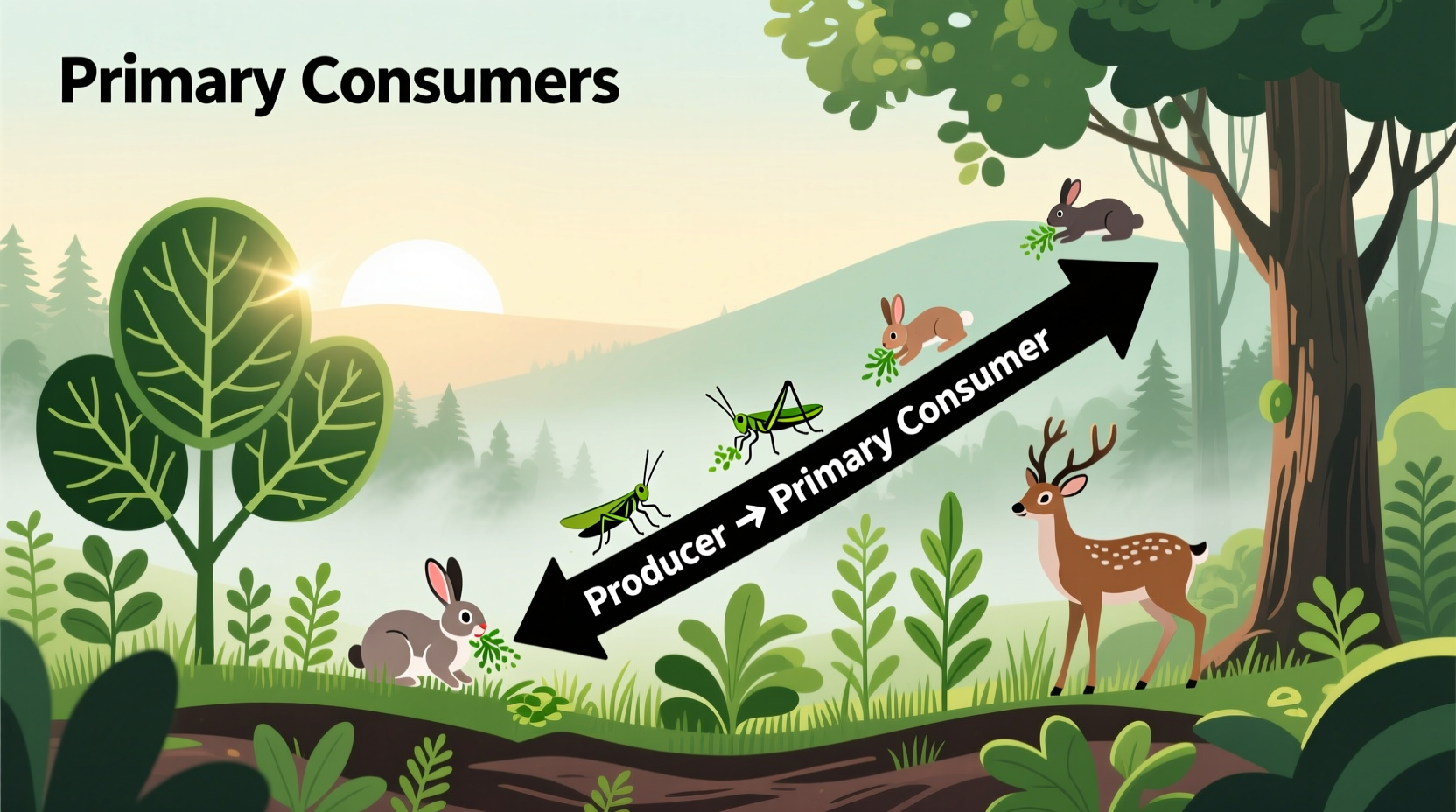A producer in a food chain is an organism that creates its own food through photosynthesis or chemosynthesis, forming the foundational energy source for all other life in an ecosystem. Plants, algae, and certain bacteria serve as primary producers, converting sunlight or chemical energy into organic compounds that sustain consumers at higher trophic levels.
Understanding what a producer food chain entails provides essential insight into how ecosystems function and maintain balance. Whether you're studying biology, gardening, or simply curious about nature's interconnected systems, grasping this fundamental ecological concept reveals why certain organisms form the bedrock of life on Earth. By the end of this article, you'll recognize producers in any ecosystem, understand their critical role in energy transfer, and appreciate how human activities impact these vital organisms.
What Exactly Is a Producer in the Food Chain?
Producers, also known as autotrophs, represent the first trophic level in any food chain. These organisms possess the unique ability to synthesize organic compounds from inorganic substances using either light energy (photosynthesis) or chemical energy (chemosynthesis). Unlike consumers that must eat other organisms, producers create their own sustenance, making them the primary source of energy for nearly all life forms.
The scientific definition specifies that producers convert carbon dioxide and water into glucose and oxygen through photosynthesis, or utilize inorganic molecules through chemosynthesis in environments without sunlight. This biochemical process establishes the energy foundation upon which entire ecosystems depend.

How Producers Power Ecosystems: The Energy Transfer Process
Energy flow through ecosystems follows a precise pattern beginning with producers. When sunlight strikes a leaf, chlorophyll captures this energy to convert CO₂ and H₂O into glucose—a process with remarkable efficiency constraints. Only about 1-2% of available solar energy gets converted to chemical energy through photosynthesis.
This energy transfer continues through trophic levels with significant losses at each step. When primary consumers (herbivores) eat producers, they typically gain only 10% of the energy originally captured by the plants. This 10% rule explains why food chains rarely exceed four or five trophic levels—there simply isn't enough energy to sustain higher levels.
| Trophic Level | Energy Available | Example Organisms |
|---|---|---|
| Producers | 100% | Plants, algae, cyanobacteria |
| Primary Consumers | 10% | Grasshoppers, rabbits, zooplankton |
| Secondary Consumers | 1% | Frogs, small fish, birds |
| Tertiary Consumers | 0.1% | Hawks, large fish, snakes |
Different Types of Producers Across Ecosystems
While terrestrial ecosystems feature familiar green plants as primary producers, aquatic environments rely heavily on microscopic organisms. According to National Geographic's educational resources, phytoplankton alone generate approximately 50% of Earth's oxygen and form the base of most marine food chains (National Geographic, 2023).
Terrestrial producers include:
- Grasses and herbaceous plants in grasslands
- Trees in forest ecosystems
- Cacti and succulents in desert environments
Aquatic producers encompass:
- Phytoplankton in open water
- Seagrasses in shallow coastal areas
- Algae attached to rocks and other surfaces
Specialized environments feature unique producers. In deep-sea hydrothermal vents, chemosynthetic bacteria convert hydrogen sulfide into energy, supporting entire ecosystems independent of sunlight. The US Forest Service documents how these specialized producers create biological oases in otherwise barren environments (US Forest Service, 2022).
Common Misconceptions About Producers
Many learners mistakenly classify mushrooms and other fungi as producers. However, Britannica clearly explains that fungi are actually decomposers that obtain energy by breaking down organic matter (Britannica, 2023). True producers must create their own food rather than consume existing organic material.
Another frequent confusion involves whether all green organisms are producers. While chlorophyll typically indicates photosynthetic capability, some parasitic plants like dodder have lost this ability and function as consumers instead. The critical factor is whether the organism synthesizes its own organic compounds.
Why Producers Matter for Environmental Health
Producers serve as ecological indicators—changes in their populations often signal broader environmental issues. A decline in phytoplankton, for instance, can indicate ocean acidification or pollution problems. Terrestrial plant diversity correlates strongly with overall ecosystem resilience.
Human food security directly depends on understanding producer-consumer relationships. Modern agriculture essentially manages artificial food chains where crops serve as producers for human consumption. When these producer systems fail—through drought, disease, or soil degradation—the entire food chain suffers consequences.
Observing Producers in Your Local Environment
You don't need specialized equipment to study producers. Start by identifying different plant types in your neighborhood:
- Visit a local park or natural area
- Document various plant species (trees, grasses, flowers)
- Look for evidence of primary consumers (insect damage on leaves)
- Sketch a simple food chain showing energy flow
This hands-on approach transforms abstract concepts into tangible understanding. Urban environments also host surprising producer diversity—mosses growing between sidewalk cracks, algae in puddles, and even lichens on building surfaces all represent nature's remarkable adaptability.
Frequently Asked Questions
Are all plants producers in a food chain?
Most plants function as producers through photosynthesis, but some exceptions exist. Parasitic plants like dodder and mycoheterotrophic plants such as Indian pipe obtain nutrients from other organisms and function as consumers rather than true producers.
Can producers exist without sunlight?
Yes, certain producers use chemosynthesis instead of photosynthesis. Deep-sea vent bacteria convert hydrogen sulfide into energy, creating food chains completely independent of sunlight. These specialized producers support unique ecosystems in complete darkness.
How do producers affect climate change?
Producers play a crucial role in carbon cycling. Through photosynthesis, they absorb atmospheric CO₂ and store carbon in plant tissues. Forests and phytoplankton act as significant carbon sinks, helping mitigate climate change. Deforestation and ocean acidification reduce this capacity, accelerating global warming.
Why are producers always at the bottom of food chains?
Producers form the foundation because they convert inorganic energy sources into organic compounds that other organisms can use. No other trophic level can create energy from non-living sources, making producers the essential starting point for energy flow through ecosystems.
What happens if producers disappear from an ecosystem?
The entire food chain collapses. Primary consumers lose their food source, leading to population declines that cascade through higher trophic levels. Ecosystems without producers cannot sustain complex life, eventually becoming barren environments with only decomposers remaining until organic matter is exhausted.











 浙公网安备
33010002000092号
浙公网安备
33010002000092号 浙B2-20120091-4
浙B2-20120091-4